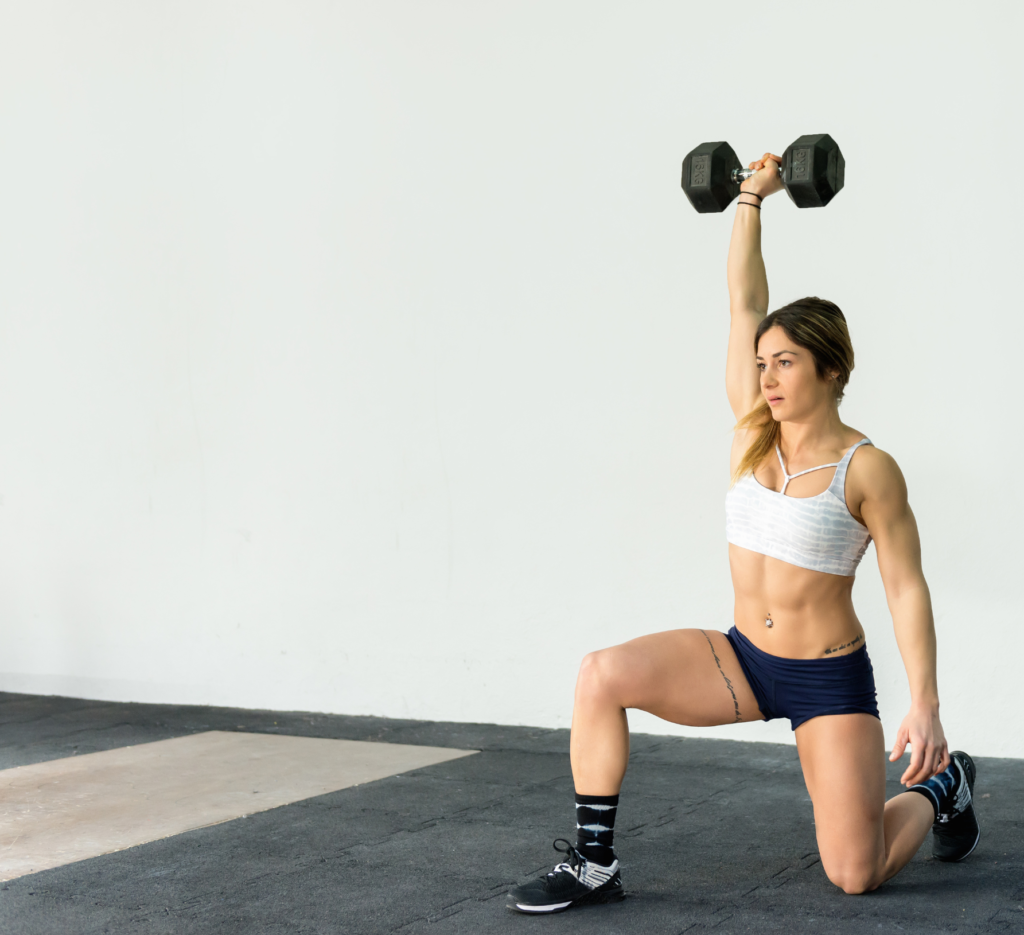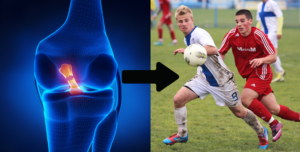
Krafttraining ist weit mehr als ein Mittel zur Verbesserung der Ästhetik und Reduktion des Körperfetts. Es bietet zahlreiche gesundheitliche Vorteile, die von der Reduzierung des Verletzungsrisikos bis hin zur Bekämpfung chronischer Krankheiten reichen. Doch welche Argumente sprechen konkret für Krafttraining und gibt es überhaupt Gegenargumente?
1. Verletzungsrisiko Krafttraining kann akute Sportverletzungen um ein Drittel und Überlastungsverletzungen um fast die Hälfte reduzieren (Lauersen et al., 2014). Die relative Beinkraft ist bei verletzten Athleten signifikant niedriger als bei unverletzten (Case et al., 2020). Auch bei der Rehabilitation, etwa nach Kreuzbandverletzungen, spielt Krafttraining eine entscheidende Rolle (Welling et al., 2020; Ericsson et al., 2013; Grindem et al., 2016).
2. Leistungsfähigkeit Krafttraining verbessert die Leistungsfähigkeit in den meisten Sportarten. Es steigert die Kraftentwicklungsrate, Sprung- und Sprintfähigkeit sowie die Laufökonomie (Rodriguez-Rosell et al., 2018; Seitz et al., 2014; Keiner et al., 2014; Storen et al., 2008).
3. Sterblichkeitsrate Eine Meta-Analyse mit 370.256 Teilnehmern zeigte, dass Widerstandstraining die Gesamtmortalität um 21 % und in Kombination mit Ausdauertraining sogar um 40 % senkt (Saeidifard et al., 2019). Höhere Muskelkraft ist mit einem geringeren Sterberisiko verbunden (Garcia-Hermoso et al., 2018).
4. Krebs Patienten mit höherer körperlicher Aktivität nach einer Krebsdiagnose haben ein deutlich geringeres Risiko für krebsspezifische Sterblichkeit und Rückfälle (Ruiz-Casado et al., 2017; Stamatakis et al., 2018; Cormie et al., 2017; Hayes et al., 2019). Krafttraining reduziert insbesondere das Risiko für Darm- und Nierenkrebs (Mazzilli et al., 2019).
5. Schwangerschaft Körperliche Aktivität während der Schwangerschaft senkt das Risiko für Depressionen, Schwangerschaftsdiabetes und Präeklampsie und fördert eine gesündere Gewichtszunahme (Marín-Jiménez et al., 2021). Der Geburtsvorgang wird erleichtert, und es kommt seltener zu periduralen Anästhesien (Schäfer-Graf et al., 2018; Thangaratinam et al., 2012; Brown et al., 2018).
6. Arthrose Eine Kombination aus Krafttraining, aerobem Training und Funktionstraining lindert Schmerzen und verbessert die Beweglichkeit bei Arthrose (Dr. C.S. Kampshoff et al., 2018; Rocha et al., 2019; Weng et al., 2022).
7. Osteoporose Hochintensives Krafttraining kann die Knochendichte erhöhen und Leistungsfähigkeit verbessern (Watson et al., 2018). Krafttraining und Stoßübungen fördern die Knochenbildung (Galli et al., 2010).
8. Migräne Krafttraining reduziert die Migränehäufigkeit und Nackenschmerzen, die oft mit Migräne einhergehen (Woldeamanuel & Oliveira, 2022; Ashina et al., 2015; Bragatto et al., 2019; Carvalho et al., 2020).
9. Fibromyalgie Krafttraining reduziert Schmerzen, Müdigkeit, Depressionen und verbessert die Lebensqualität bei Fibromyalgie (Andrade et al., 2018).
10. Chronische untere Rückenschmerzen Krafttraining ist effektiv zur Linderung von Schmerzen und Einschränkungen bei chronischen unteren Rückenschmerzen (Chou et al., 2017; Hayden et al., 2005; Hayden et al., 2021).
11. Depressionen Krafttraining reduziert depressive Symptome unabhängig vom Gesundheitszustand (Gordon et al., 2017; O’Connor et al., 2010; Gordon et al., 2018).
12. Sarkopenie Krafttraining hilft, den Muskelabbau im Alter zu verlangsamen und die Mobilität und Unabhängigkeit zu erhalten (Wingwood et al., 2021; Kemmler et al., 2020; Vikberg et al., 2019).
13. Kardiovaskuläre Erkrankungen Krafttraining senkt das Risiko für Herz-Kreislauf-Erkrankungen und Bluthochdruck (Momma et al., 2022; Giovannucci et al., 2021; Shailendra et al., 2022; Correia et al., 2023).
14. Diabetes
Muskelmasse und -kraft verbessern die Blutzuckerkontrolle und Insulinempfindlichkeit (Aguiar et al., 2014). Eine Studie mit 32.002 US-Männern zeigte, dass 150 Minuten Krafttraining pro Woche das Risiko für Typ-2-Diabetes um 34 % senkt, Ausdauertraining um 52 % und die Kombination beider um 59 % (Grøntved et al., 2012). Ähnliche Ergebnisse wurden bei Frauen gefunden (Grøntved et al., 2014; Shiroma et al., 2017).
15. Schlaf
Ausreichender Schlaf ist essenziell für die Gesundheit. Schlafstörungen erhöhen das Risiko für Herz-Kreislauf-Erkrankungen und Depressionen und führen zu Tagesmüdigkeit (St-Onge et al., 2016; Sabanayagam & Shankar, 2010). Krafttraining verbessert die subjektive Schlafqualität besser als pharmakologische Behandlungen (Kovacevic et al., 2018; Winkler et al., 2014).
16. Gewebe
Knorpel: Muskelmasse beeinflusst die Knorpelgesundheit. Stärkere Oberschenkelmuskeln können nach Meniskusoperationen das Risiko für arthrotische Veränderungen senken (Hudelmaier et al., 2003; Ericsson et al., 2019).
Sehnen: Sehnen passen sich an hohe Belastungen an und können durch Krafttraining gestärkt werden, was bei Tendinopathien hilfreich ist (Murphy et al., 2018; Radovanović et al., 2022).
17. Gewicht / Körperfettanteil reduzieren
Krafttraining hilft beim Abnehmen, indem es den Körperfettanteil und das viszerale Fett reduziert und die Insulinsensitivität verbessert (Wewege et al., 2022; Aguiar et al., 2014). Kombinationen aus Krafttraining und Kalorienrestriktion sind am effektivsten (Lopez et al., 2022).
18. Beweglichkeit
Krafttraining kann die Beweglichkeit ebenso gut wie Dehnübungen verbessern (Afonso et al., 2021). Eine Studie zeigte, dass sorgfältig konzipiertes Krafttraining die Beweglichkeit effektiv steigern kann (Morton et al., 2011).
Zusammenfassend lässt sich sagen, dass Krafttraining aufgrund seines breiten Nutzens für die Gesundheit möglicherweise unverzichtbar ist. Es bietet eine kosteneffiziente und sichere Methode zur Erhaltung und Verbesserung der Gesundheit.
Dein DK Sports & Physio Team aus der Karlsruher Oststadt
Den ausführlichen Artikel findest du in unserer DK Academy.
Wir geben Physiotherapeuten, Trainern und allen Wissbegierigen einen sachlichen Einblick in die Physiotherapie und helfen so die Rehabilitation und das Training nach Verletzungen oder Beschwerden effizienter zu gestalten.
Sichere dir vollen Zugriff auf unsere Rehab Live Sessions, exklusive Review- und Blogartikel, Simple Tipps und Infografiken.
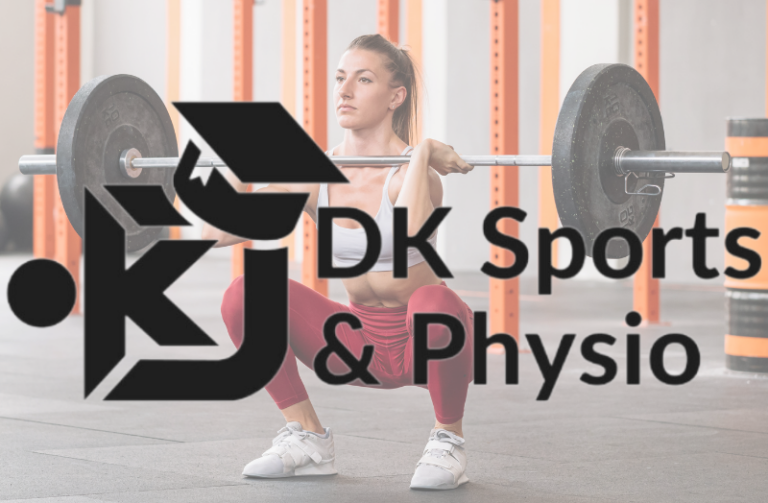
Du benötigst Physiotherapie im Raum Karlsruhe? Dann sind wir gerne für dich da und unterstützen dich!
Dein DK Sports & Physio Team aus der Karlsruher Oststadt
Unsere weiteren Blog-Artikel


Was manuelle Lymphdrainage (nicht) kann
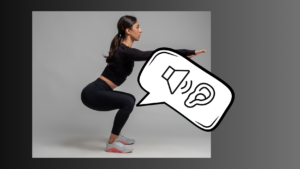
Gelenkgeräusche – muss man sich Gedanken machen?
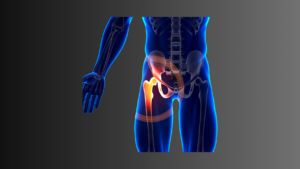
Seitlicher Hüftschmerz Update und Deep-Dive

Faszinierend oder fast nicht belegt – Der Faszien-Hype kritisch betrachtet

Von Eisbädern bis Foam Rolling: Was hilft wirklich gegen Muskelkater?

Kreuzbandrehabilitation – Wie lange brauche ich die Unterarmgehstützen?
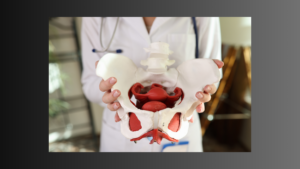
Wie schief bin ich eigentlich und ist das schlimm?
Quellenangaben:
Lauersen, J. B., Bertelsen, D. M., & Andersen, L. B. (2014). The effectiveness of exercise interventions to prevent sports injuries: a systematic review and meta-analysis of randomised controlled trials. British journal of sports medicine, 48(11), 871–877. https://doi.org/10.1136/bjsports-2013-092538
Case, M. J., Knudson, D. V., & Downey, D. L. (2020). Barbell Squat Relative Strength as an Identifier for Lower Extremity Injury in Collegiate Athletes. Journal of strength and conditioning research, 34(5), 1249–1253. https://doi.org/10.1519/JSC.0000000000003554
Welling, W., Benjaminse, A., Lemmink, K., & Gokeler, A. (2020). Passing return to sports tests after ACL reconstruction is associated with greater likelihood for return to sport but fail to identify second injury risk. The Knee, 27(3), 949–957. https://doi.org/10.1016/j.knee.2020.03.007
Ericsson, Y. B., Roos, E. M., & Frobell, R. B. (2013). Lower extremity performance following ACL rehabilitation in the KANON-trial: impact of reconstruction and predictive value at 2 and 5 years. British journal of sports medicine, 47(15), 980–985. https://doi.org/10.1136/bjsports-2013-092642
Grindem, H., Snyder-Mackler, L., Moksnes, H., Engebretsen, L., & Risberg, M. A. (2016). Simple decision rules can reduce reinjury risk by 84% after ACL reconstruction: the Delaware-Oslo ACL cohort study. British journal of sports medicine, 50(13), 804–808. https://doi.org/10.1136/bjsports-2016-096031
Rodríguez-Rosell, D., Pareja-Blanco, F., Aagaard, P., & González-Badillo, J. J. (2018). Physiological and methodological aspects of rate of force development assessment in human skeletal muscle. Clinical physiology and functional imaging, 38(5), 743–762. https://doi.org/10.1111/cpf.12495
Seitz, L. B., Reyes, A., Tran, T. T., Saez de Villarreal, E., & Haff, G. G. (2014). Increases in lower-body strength transfer positively to sprint performance: a systematic review with meta-analysis. Sports medicine (Auckland, N.Z.), 44(12), 1693–1702. https://doi.org/10.1007/s40279-014-0227-1
Keiner, M., Sander, A., Wirth, K., & Schmidtbleicher, D. (2014). Long-term strength training effects on change-of-direction sprint performance. Journal of strength and conditioning research, 28(1), 223–231. https://doi.org/10.1519/JSC.0b013e318295644b
Støren, O., Helgerud, J., Støa, E. M., & Hoff, J. (2008). Maximal strength training improves running economy in distance runners. Medicine and science in sports and exercise, 40(6), 1087–1092. https://doi.org/10.1249/MSS.0b013e318168da2f
Eihara, Y., Takao, K., Sugiyama, T., Maeo, S., Terada, M., Kanehisa, H., & Isaka, T. (2022). Heavy Resistance Training Versus Plyometric Training for Improving Running Economy and Running Time Trial Performance: A Systematic Review and Meta-analysis. Sports medicine – open, 8(1), 138. https://doi.org/10.1186/s40798-022-00511-1
Saeidifard, F., Medina-Inojosa, J. R., West, C. P., Olson, T. P., Somers, V. K., Bonikowske, A. R., Prokop, L. J., Vinciguerra, M., & Lopez-Jimenez, F. (2019). The association of resistance training with mortality: A systematic review and meta-analysis. European journal of preventive cardiology, 26(15), 1647–1665. https://doi.org/10.1177/2047487319850718
García-Hermoso, A., Cavero-Redondo, I., Ramírez-Vélez, R., Ruiz, J. R., Ortega, F. B., Lee, D. C., & Martínez-Vizcaíno, V. (2018). Muscular Strength as a Predictor of All-Cause Mortality in an Apparently Healthy Population: A Systematic Review and Meta-Analysis of Data From Approximately 2 Million Men and Women. Archives of physical medicine and rehabilitation, 99(10), 2100–2113.e5. https://doi.org/10.1016/j.apmr.2018.01.008
Ruiz-Casado, A., Martín-Ruiz, A., Pérez, L. M., Provencio, M., Fiuza-Luces, C., & Lucia, A. (2017). Exercise and the Hallmarks of Cancer. Trends in cancer, 3(6), 423–441. https://doi.org/10.1016/j.trecan.2017.04.007
Stamatakis, E., Lee, I. M., Bennie, J., Freeston, J., Hamer, M., O’Donovan, G., Ding, D., Bauman, A., & Mavros, Y. (2018). Does Strength-Promoting Exercise Confer Unique Health Benefits? A Pooled Analysis of Data on 11 Population Cohorts With All-Cause, Cancer, and Cardiovascular Mortality Endpoints. American journal of epidemiology, 187(5), 1102–1112. https://doi.org/10.1093/aje/kwx345
Cormie, P., Zopf, E. M., Zhang, X., & Schmitz, K. H. (2017). The Impact of Exercise on Cancer Mortality, Recurrence, and Treatment-Related Adverse Effects. Epidemiologic reviews, 39(1), 71–92. https://doi.org/10.1093/epirev/mxx007
Hayes, S. C., Newton, R. U., Spence, R. R., & Galvão, D. A. (2019). The Exercise and Sports Science Australia position statement: Exercise medicine in cancer management. Journal of science and medicine in sport, 22(11), 1175–1199. https://doi.org/10.1016/j.jsams.2019.05.003
Mazzilli, K. M., Matthews, C. E., Salerno, E. A., & Moore, S. C. (2019). Weight Training and Risk of 10 Common Types of Cancer. Medicine and science in sports and exercise, 51(9), 1845–1851. https://doi.org/10.1249/MSS.0000000000001987
Mottola, M. F., Davenport, M. H., Ruchat, S. M., Davies, G. A., Poitras, V. J., Gray, C. E., Jaramillo Garcia, A., Barrowman, N., Adamo, K. B., Duggan, M., Barakat, R., Chilibeck, P., Fleming, K., Forte, M., Korolnek, J., Nagpal, T., Slater, L. G., Stirling, D., & Zehr, L. (2018). 2019 Canadian guideline for physical activity throughout pregnancy. British journal of sports medicine, 52(21), 1339–1346. https://doi.org/10.1136/bjsports-2018-100056
Ferrari, N., & Joisten, C. (2021). Impact of physical activity on course and outcome of pregnancy from pre- to postnatal. European journal of clinical nutrition, 75(12), 1698–1709. https://doi.org/10.1038/s41430-021-00904-7
Ribeiro, M. M., Andrade, A., & Nunes, I. (2021). Physical exercise in pregnancy: benefits, risks and prescription. Journal of perinatal medicine, 50(1), 4–17. https://doi.org/10.1515/jpm-2021-0315
Cherni, Y., Desseauve, D., Decatoire, A., Veit-Rubinc, N., Begon, M., Pierre, F., & Fradet, L. (2019). Evaluation of ligament laxity during pregnancy. Journal of gynecology obstetrics and human reproduction, 48(5), 351–357. https://doi.org/10.1016/j.jogoh.2019.02.009
Perales, M., Santos-Lozano, A., Ruiz, J. R., Lucia, A., & Barakat, R. (2016). Benefits of aerobic or resistance training during pregnancy on maternal health and perinatal outcomes: A systematic review. Early human development, 94, 43–48. https://doi.org/10.1016/j.earlhumdev.2016.01.004
Weng Q, Goh S, Wu J, et alComparative efficacy of exercise therapy and oral non-steroidal anti-inflammatory drugs and paracetamol for knee or hip osteoarthritis: a network meta-analysis of randomised controlled trialsBritish Journal of Sports Medicine Published Online First: 02 January 2023. https://doi.org/10.1136/bjsports-2022-105898
Watson, S. L., Weeks, B. K., Weis, L. J., Harding, A. T., Horan, S. A., & Beck, B. R. (2018). High-Intensity Resistance and Impact Training Improves Bone Mineral Density and Physical Function in Postmenopausal Women With Osteopenia and Osteoporosis: The LIFTMOR Randomized Controlled Trial. Journal of bone and mineral research : the official journal of the American Society for Bone and Mineral Research, 33(2), 211–220. https://doi.org/10.1002/jbmr.3284
Skelton, D. et Al. (2018). Strong, Steady and Straight An Expert Consensus Statement on physical activity and exercise for osteoporosis. https://www.bgs.org.uk/sites/default/files/content/attachment/2019-02-20/FINAL%20Consensus%20Statement_Strong%20Steady%20and%20Straight_DEC18.pdf
Galli C, Passeri G, Macaluso GM. Osteocytes and WNT: the Mechanical Control of Bone Formation. Journal of Dental Research. 2010;89(4):331-343. doi:10.1177/0022034510363963
Oliveira, A. B., Queiroz, L. P., Sampaio Rocha-Filho, P., Sarmento, E. M., & Peres, M. F. (2020). Annual indirect costs secondary to headache disability in Brazil. Cephalalgia : an international journal of headache, 40(6), 597–605. https://doi.org/10.1177/0333102419889357
Linde, M., Gustavsson, A., Stovner, L. J., Steiner, T. J., Barré, J., Katsarava, Z., Lainez, J. M., Lampl, C., Lantéri-Minet, M., Rastenyte, D., Ruiz de la Torre, E., Tassorelli, C., & Andrée, C. (2012). The cost of headache disorders in Europe: the Eurolight project. European journal of neurology, 19(5), 703–711. https://doi.org/10.1111/j.1468-1331.2011.03612.x
Yu, S., Liu, R., Zhao, G., Yang, X., Qiao, X., Feng, J., Fang, Y., Cao, X., He, M., & Steiner, T. (2012). The prevalence and burden of primary headaches in China: a population-based door-to-door survey. Headache, 52(4), 582–591. https://doi.org/10.1111/j.1526-4610.2011.02061.x
Woldeamanuel, Y. W., & Cowan, R. P. (2017). Migraine affects 1 in 10 people worldwide featuring recent rise: A systematic review and meta-analysis of community-based studies involving 6 million participants. Journal of the neurological sciences, 372, 307–315. https://doi.org/10.1016/j.jns.2016.11.071
Woldeamanuel, Y. W., & Oliveira, A. B. D. (2022). What is the efficacy of aerobic exercise versus strength training in the treatment of migraine? A systematic review and network meta-analysis of clinical trials. The journal of headache and pain, 23(1), 134. https://doi.org/10.1186/s10194-022-01503-y
Ashina, S., Bendtsen, L., Lyngberg, A. C., Lipton, R. B., Hajiyeva, N., & Jensen, R. (2015). Prevalence of neck pain in migraine and tension-type headache: a population study. Cephalalgia : an international journal of headache, 35(3), 211–219. https://doi.org/10.1177/0333102414535110
Bragatto, M. M., Bevilaqua-Grossi, D., Benatto, M. T., Lodovichi, S. S., Pinheiro, C. F., Carvalho, G. F., Dach, F., Fernández-de-Las-Peñas, C., & Florencio, L. L. (2019). Is the presence of neck pain associated with more severe clinical presentation in patients with migraine? A cross-sectional study. Cephalalgia : an international journal of headache, 39(12), 1500–1508. https://doi.org/10.1177/0333102419854061
Carvalho, G. F., Schwarz, A., Szikszay, T. M., Adamczyk, W. M., Bevilaqua-Grossi, D., & Luedtke, K. (2020). Physical therapy and migraine: musculoskeletal and balance dysfunctions and their relevance for clinical practice. Brazilian journal of physical therapy, 24(4), 306–317. https://doi.org/10.1016/j.bjpt.2019.11.001
Krøll, L. S., Hammarlund, C. S., Westergaard, M. L., Nielsen, T., Sloth, L. B., Jensen, R. H., & Gard, G. (2017). Level of physical activity, well-being, stress and self-rated health in persons with migraine and co-existing tension-type headache and neck pain. The journal of headache and pain, 18(1), 46. https://doi.org/10.1186/s10194-017-0753-y
Andrade, A., de Azevedo Klumb Steffens, R., Sieczkowska, S.M. et al. A systematic review of the effects of strength training in patients with fibromyalgia: clinical outcomes and design considerations. Adv Rheumatol 58, 36 (2018). https://doi.org/10.1186/s42358-018-0033-9
Chou, R., Deyo, R., Friedly, J., Skelly, A., Hashimoto, R., Weimer, M., Fu, R., Dana, T., Kraegel, P., Griffin, J., Grusing, S., & Brodt, E. D. (2017). Nonpharmacologic Therapies for Low Back Pain: A Systematic Review for an American College of Physicians Clinical Practice Guideline. Annals of internal medicine, 166(7), 493–505. https://doi.org/10.7326/M16-2459
Hayden, J. A., van Tulder, M. W., Malmivaara, A., & Koes, B. W. (2005). Exercise therapy for treatment of non-specific low back pain. The Cochrane database of systematic reviews, (3), CD000335. https://doi.org/10.1002/14651858.CD000335.pub2
Hayden, J. A., Ellis, J., Ogilvie, R., Malmivaara, A., & van Tulder, M. W. (2021). Exercise therapy for chronic low back pain. The Cochrane database of systematic reviews, 9(9), CD009790. https://doi.org/10.1002/14651858.CD009790.pub2
Miyamoto, G. C., Lin, C. C., Cabral, C. M. N., van Dongen, J. M., & van Tulder, M. W. (2019). Cost-effectiveness of exercise therapy in the treatment of non-specific neck pain and low back pain: a systematic review with meta-analysis. British journal of sports medicine, 53(3), 172–181. https://doi.org/10.1136/bjsports-2017-098765
Fernández-Rodríguez, R., Álvarez-Bueno, C., Cavero-Redondo, I., Torres-Costoso, A., Pozuelo-Carrascosa, D. P., Reina-Gutiérrez, S., Pascual-Morena, C., & Martínez-Vizcaíno, V. (2022). Best Exercise Options for Reducing Pain and Disability in Adults With Chronic Low Back Pain: Pilates, Strength, Core-Based, and Mind-Body. A Network Meta-analysis. The Journal of orthopaedic and sports physical therapy, 52(8), 505–521. https://doi.org/10.2519/jospt.2022.10671
World Health Organization Depression fact sheet. http://www.who.int/mediacentre/factsheets/fs369/en/. Updated February 2017. Accessed March 1, 2017.
Penninx, B. W., Milaneschi, Y., Lamers, F., & Vogelzangs, N. (2013). Understanding the somatic consequences of depression: biological mechanisms and the role of depression symptom profile. BMC medicine, 11, 129. https://doi.org/10.1186/1741-7015-11-129
Correll, C. U., Solmi, M., Veronese, N., Bortolato, B., Rosson, S., Santonastaso, P., Thapa-Chhetri, N., Fornaro, M., Gallicchio, D., Collantoni, E., Pigato, G., Favaro, A., Monaco, F., Kohler, C., Vancampfort, D., Ward, P. B., Gaughran, F., Carvalho, A. F., & Stubbs, B. (2017). Prevalence, incidence and mortality from cardiovascular disease in patients with pooled and specific severe mental illness: a large-scale meta-analysis of 3,211,768 patients and 113,383,368 controls. World psychiatry : official journal of the World Psychiatric Association (WPA), 16(2), 163–180. https://doi.org/10.1002/wps.20420
Lett, H. S., Blumenthal, J. A., Babyak, M. A., Sherwood, A., Strauman, T., Robins, C., & Newman, M. F. (2004). Depression as a risk factor for coronary artery disease: evidence, mechanisms, and treatment. Psychosomatic medicine, 66(3), 305–315. https://doi.org/10.1097/01.psy.0000126207.43307.c0
Green, R. C., Cupples, L. A., Kurz, A., Auerbach, S., Go, R., Sadovnick, D., Duara, R., Kukull, W. A., Chui, H., Edeki, T., Griffith, P. A., Friedland, R. P., Bachman, D., & Farrer, L. (2003). Depression as a risk factor for Alzheimer disease: the MIRAGE Study. Archives of neurology, 60(5), 753–759. https://doi.org/10.1001/archneur.60.5.753
Knol, M. J., Twisk, J. W., Beekman, A. T., Heine, R. J., Snoek, F. J., & Pouwer, F. (2006). Depression as a risk factor for the onset of type 2 diabetes mellitus. A meta-analysis. Diabetologia, 49(5), 837–845. https://doi.org/10.1007/s00125-006-0159-x
Whooley, M. A., de Jonge, P., Vittinghoff, E., Otte, C., Moos, R., Carney, R. M., Ali, S., Dowray, S., Na, B., Feldman, M. D., Schiller, N. B., & Browner, W. S. (2008). Depressive symptoms, health behaviors, and risk of cardiovascular events in patients with coronary heart disease. JAMA, 300(20), 2379–2388. https://doi.org/10.1001/jama.2008.711
DiMatteo, M. R., Lepper, H. S., & Croghan, T. W. (2000). Depression is a risk factor for noncompliance with medical treatment: meta-analysis of the effects of anxiety and depression on patient adherence. Archives of internal medicine, 160(14), 2101–2107. https://doi.org/10.1001/archinte.160.14.2101
Gordon, B. R., McDowell, C. P., Lyons, M., & Herring, M. P. (2017). The Effects of Resistance Exercise Training on Anxiety: A Meta-Analysis and Meta-Regression Analysis of Randomized Controlled Trials. Sports medicine (Auckland, N.Z.), 47(12), 2521–2532. https://doi.org/10.1007/s40279-017-0769-0
O’Connor PJ, Herring MP, Caravalho A. (2010). Mental Health Benefits of Strength Training in Adults. American Journal of Lifestyle Medicine. 2010;4(5):377-396. doi:10.1177/1559827610368771
Gordon, B. R., McDowell, C. P., Hallgren, M., Meyer, J. D., Lyons, M., & Herring, M. P. (2018). Association of Efficacy of Resistance Exercise Training With Depressive Symptoms: Meta-analysis and Meta-regression Analysis of Randomized Clinical Trials. JAMA psychiatry, 75(6), 566–576. https://doi.org/10.1001/jamapsychiatry.2018.0572
Wingood, M., Bonnell, L., LaCroix, A. Z., Rosenberg, D., Walker, R., Bellettiere, J., Greenwood-Hickman, M. A., Wing, D., & Gell, N. (2021). Community-Dwelling Older Adults and Physical Activity Recommendations: Patterns of Aerobic, Strengthening, and Balance Activities. Journal of aging and physical activity, 30(4), 653–665. https://doi.org/10.1123/japa.2021-0194
Kemmler, W., Kohl, M., Fröhlich, M., Jakob, F., Engelke, K., von Stengel, S., & Schoene, D. (2020). Effects of High-Intensity Resistance Training on Osteopenia and Sarcopenia Parameters in Older Men with Osteosarcopenia-One-Year Results of the Randomized Controlled Franconian Osteopenia and Sarcopenia Trial (FrOST). Journal of bone and mineral research : the official journal of the American Society for Bone and Mineral Research, 35(9), 1634–1644. https://doi.org/10.1002/jbmr.4027
Vikberg, S., Sörlén, N., Brandén, L., Johansson, J., Nordström, A., Hult, A., & Nordström, P. (2019). Effects of Resistance Training on Functional Strength and Muscle Mass in 70-Year-Old Individuals With Pre-sarcopenia: A Randomized Controlled Trial. Journal of the American Medical Directors Association, 20(1), 28–34. https://doi.org/10.1016/j.jamda.2018.09.011
Momma, H., Kawakami, R., Honda, T., & Sawada, S. S. (2022). Muscle-strengthening activities are associated with lower risk and mortality in major non-communicable diseases: a systematic review and meta-analysis of cohort studies. British journal of sports medicine, 56(13), 755–763. https://doi.org/10.1136/bjsports-2021-105061
Giovannucci, E. L., Rezende, L. F. M., & Lee, D. H. (2021). Muscle-strengthening activities and risk of cardiovascular disease, type 2 diabetes, cancer and mortality: A review of prospective cohort studies. Journal of internal medicine, 290(4), 789–805. https://doi.org/10.1111/joim.13344
Shailendra, P., Baldock, K. L., Li, L. S. K., Bennie, J. A., & Boyle, T. (2022). Resistance Training and Mortality Risk: A Systematic Review and Meta-Analysis. American journal of preventive medicine, 63(2), 277–285. https://doi.org/10.1016/j.amepre.2022.03.020
Correia, R.R., Veras, A.S.C., Tebar, W.R. et al. Strength training for arterial hypertension treatment: a systematic review and meta-analysis of randomized clinical trials. Sci Rep13, 201 (2023). https://doi.org/10.1038/s41598-022-26583-3
Aguiar, E. J., Morgan, P. J., Collins, C. E., Plotnikoff, R. C., & Callister, R. (2014). Efficacy of interventions that include diet, aerobic and resistance training components for type 2 diabetes prevention: a systematic review with meta-analysis. The international journal of behavioral nutrition and physical activity, 11, 2. https://doi.org/10.1186/1479-5868-11-2
Grøntved, A., Rimm, E. B., Willett, W. C., Andersen, L. B., & Hu, F. B. (2012). A prospective study of weight training and risk of type 2 diabetes mellitus in men. Archives of internal medicine, 172(17), 1306–1312. https://doi.org/10.1001/archinternmed.2012.3138
Grøntved, A., Pan, A., Mekary, R. A., Stampfer, M., Willett, W. C., Manson, J. E., & Hu, F. B. (2014). Muscle-strengthening and conditioning activities and risk of type 2 diabetes: a prospective study in two cohorts of US women. PLoS medicine, 11(1), e1001587. https://doi.org/10.1371/journal.pmed.1001587
Shiroma, E. J., Cook, N. R., Manson, J. E., Moorthy, M. V., Buring, J. E., Rimm, E. B., & Lee, I. M. (2017). Strength Training and the Risk of Type 2 Diabetes and Cardiovascular Disease. Medicine and science in sports and exercise, 49(1), 40–46. https://doi.org/10.1249/MSS.0000000000001063
Ohayon M. M. (2008). Nocturnal awakenings and comorbid disorders in the American general population. Journal of psychiatric research, 43(1), 48–54. https://doi.org/10.1016/j.jpsychires.2008.02.001
St-Onge, M. P., Grandner, M. A., Brown, D., Conroy, M. B., Jean-Louis, G., Coons, M., Bhatt, D. L., & American Heart Association Obesity, Behavior Change, Diabetes, and Nutrition Committees of the Council on Lifestyle and Cardiometabolic Health; Council on Cardiovascular Disease in the Young; Council on Clinical Cardiology; and Stroke Council (2016). Sleep Duration and Quality: Impact on Lifestyle Behaviors and Cardiometabolic Health: A Scientific Statement From the American Heart Association. Circulation, 134(18), e367–e386. https://doi.org/10.1161/CIR.0000000000000444
Sabanayagam, C., & Shankar, A. (2010). Sleep duration and cardiovascular disease: results from the National Health Interview Survey. Sleep, 33(8), 1037–1042. https://doi.org/10.1093/sleep/33.8.1037
Redline, S., Yenokyan, G., Gottlieb, D. J., Shahar, E., O’Connor, G. T., Resnick, H. E., Diener-West, M., Sanders, M. H., Wolf, P. A., Geraghty, E. M., Ali, T., Lebowitz, M., & Punjabi, N. M. (2010). Obstructive sleep apnea-hypopnea and incident stroke: the sleep heart health study. American journal of respiratory and critical care medicine, 182(2), 269–277. https://doi.org/10.1164/rccm.200911-1746OC
Ford, D. E., & Kamerow, D. B. (1989). Epidemiologic study of sleep disturbances and psychiatric disorders. An opportunity for prevention?. JAMA, 262(11), 1479–1484. https://doi.org/10.1001/jama.262.11.1479
Kojima, M., Wakai, K., Kawamura, T., Tamakoshi, A., Aoki, R., Lin, Y., Nakayama, T., Horibe, H., Aoki, N., & Ohno, Y. (2000). Sleep patterns and total mortality: a 12-year follow-up study in Japan. Journal of epidemiology, 10(2), 87–93. https://doi.org/10.2188/jea.10.87
Guilleminault, C., Partinen, M., Quera-Salva, M. A., Hayes, B., Dement, W. C., & Nino-Murcia, G. (1988). Determinants of daytime sleepiness in obstructive sleep apnea. Chest, 94(1), 32–37. https://doi.org/10.1378/chest.94.1.32
Rosekind, M. R., Gregory, K. B., Mallis, M. M., Brandt, S. L., Seal, B., & Lerner, D. (2010). The cost of poor sleep: workplace productivity loss and associated costs. Journal of occupational and environmental medicine, 52(1), 91–98. https://doi.org/10.1097/JOM.0b013e3181c78c30
Leger, D., Bayon, V., Laaban, J. P., & Philip, P. (2012). Impact of sleep apnea on economics. Sleep medicine reviews, 16(5), 455–462. https://doi.org/10.1016/j.smrv.2011.10.001
Kovacevic, A., Mavros, Y., Heisz, J. J., & Fiatarone Singh, M. A. (2018). The effect of resistance exercise on sleep: A systematic review of randomized controlled trials. Sleep medicine reviews, 39, 52–68. https://doi.org/10.1016/j.smrv.2017.07.002
Winkler, A., Auer, C., Doering, B. K., & Rief, W. (2014). Drug treatment of primary insomnia: a meta-analysis of polysomnographic randomized controlled trials. CNS drugs, 28(9), 799–816. https://doi.org/10.1007/s40263-014-0198-7
Huedo-Medina, T. B., Kirsch, I., Middlemass, J., Klonizakis, M., & Siriwardena, A. N. (2012). Effectiveness of non-benzodiazepine hypnotics in treatment of adult insomnia: meta-analysis of data submitted to the Food and Drug Administration. BMJ (Clinical research ed.), 345, e8343. https://doi.org/10.1136/bmj.e8343
Rubio-Arias, J. Á., Marín-Cascales, E., Ramos-Campo, D. J., Hernandez, A. V., & Pérez-López, F. R. (2017). Effect of exercise on sleep quality and insomnia in middle-aged women: A systematic review and meta-analysis of randomized controlled trials. Maturitas, 100, 49–56. https://doi.org/10.1016/j.maturitas.2017.04.003
Mueller, M. J., & Maluf, K. S. (2002). Tissue adaptation to physical stress: a proposed „Physical Stress Theory“ to guide physical therapist practice, education, and research. Physical therapy, 82(4), 383–403.
Grzelak, P., Podgorski, M., Stefanczyk, L., Krochmalski, M., & Domzalski, M. (2012). Hypertrophied cruciate ligament in high performance weightlifters observed in magnetic resonance imaging. International orthopaedics, 36(8), 1715–1719. https://doi.org/10.1007/s00264-012-1528-3
Beaulieu, M. L., DeClercq, M. G., Rietberg, N. T., Li, S. H., Harker, E. C., Weber, A. E., Ashton-Miller, J. A., & Wojtys, E. M. (2021). The Anterior Cruciate Ligament Can Become Hypertrophied in Response to Mechanical Loading: A Magnetic Resonance Imaging Study in Elite Athletes. The American journal of sports medicine, 49(9), 2371–2378. https://doi.org/10.1177/03635465211012354
Eckstein, F., Hudelmaier, M., & Putz, R. (2006). The effects of exercise on human articular cartilage. Journal of anatomy, 208(4), 491–512. https://doi.org/10.1111/j.1469-7580.2006.00546.x
Vanwanseele, B., Eckstein, F., Knecht, H., Spaepen, A., & Stüssi, E. (2003). Longitudinal analysis of cartilage atrophy in the knees of patients with spinal cord injury. Arthritis and rheumatism, 48(12), 3377–3381. https://doi.org/10.1002/art.11367
Hudelmaier, M., Glaser, C., Englmeier, K. H., Reiser, M., Putz, R., & Eckstein, F. (2003). Correlation of knee-joint cartilage morphology with muscle cross-sectional areas vs. anthropometric variables. The anatomical record. Part A, Discoveries in molecular, cellular, and evolutionary biology, 270(2), 175–184. https://doi.org/10.1002/ar.a.10001
Ericsson, Y. B., Roos, E. M., Owman, H., & Dahlberg, L. E. (2019). Association between thigh muscle strength four years after partial meniscectomy and radiographic features of osteoarthritis 11 years later. BMC musculoskeletal disorders, 20(1), 512. https://doi.org/10.1186/s12891-019-2875-7
Hunter, D. J., & Bierma-Zeinstra, S. (2019). Osteoarthritis. Lancet (London, England), 393(10182), 1745–1759. https://doi.org/10.1016/S0140-6736(19)30417-9
Lin, I., Wiles, L., Waller, R., Goucke, R., Nagree, Y., Gibberd, M., Straker, L., Maher, C. G., & O’Sullivan, P. P. B. (2020). What does best practice care for musculoskeletal pain look like? Eleven consistent recommendations from high-quality clinical practice guidelines: systematic review. British journal of sports medicine, 54(2), 79–86. https://doi.org/10.1136/bjsports-2018-099878
Juhl, C., Christensen, R., Roos, E. M., Zhang, W., & Lund, H. (2014). Impact of exercise type and dose on pain and disability in knee osteoarthritis: a systematic review and meta-regression analysis of randomized controlled trials. Arthritis & rheumatology (Hoboken, N.J.), 66(3), 622–636. https://doi.org/10.1002/art.38290
Bricca, A., Juhl, C. B., Steultjens, M., Wirth, W., & Roos, E. M. (2019). Impact of exercise on articular cartilage in people at risk of, or with established, knee osteoarthritis: a systematic review of randomised controlled trials. British journal of sports medicine, 53(15), 940–947. https://doi.org/10.1136/bjsports-2017-098661
Bohm, S., Mersmann, F., & Arampatzis, A. (2015). Human tendon adaptation in response to mechanical loading: a systematic review and meta-analysis of exercise intervention studies on healthy adults. Sports medicine – open, 1(1), 7. https://doi.org/10.1186/s40798-015-0009-9
Murphy, M., Travers, M., Gibson, W., Chivers, P., Debenham, J., Docking, S., & Rio, E. (2018). Rate of Improvement of Pain and Function in Mid-Portion Achilles Tendinopathy with Loading Protocols: A Systematic Review and Longitudinal Meta-Analysis. Sports medicine (Auckland, N.Z.), 48(8), 1875–1891. https://doi.org/10.1007/s40279-018-0932-2
Head, J., Mallows, A., Debenham, J., Travers, M. J., & Allen, L. (2019). The efficacy of loading programmes for improving patient-reported outcomes in chronic midportion Achilles tendinopathy: A systematic review. Musculoskeletal care, 17(4), 283–299. https://doi.org/10.1002/msc.1428
Radovanović, G., Bohm, S., Peper, K. K., Arampatzis, A., & Legerlotz, K. (2022). Evidence-Based High-Loading Tendon Exercise for 12 Weeks Leads to Increased Tendon Stiffness and Cross-Sectional Area in Achilles Tendinopathy: A Controlled Clinical Trial. Sports medicine – open, 8(1), 149. https://doi.org/10.1186/s40798-022-00545-5
Kongsgaard, M., Reitelseder, S., Pedersen, T. G., Holm, L., Aagaard, P., Kjaer, M., & Magnusson, S. P. (2007). Region specific patellar tendon hypertrophy in humans following resistance training. Acta physiologica (Oxford, England), 191(2), 111–121. https://doi.org/10.1111/j.1748-1716.2007.01714.x
Turner, A., & Jeffreys, I. (2010). The Stretch-Shortening Cycle: Proposed Mechanisms and Methods for Enhancement. Strength and Conditioning Journal, 32, 87-99.
Wewege, M. A., Desai, I., Honey, C., Coorie, B., Jones, M. D., Clifford, B. K., Leake, H. B., & Hagstrom, A. D. (2022). The Effect of Resistance Training in Healthy Adults on Body Fat Percentage, Fat Mass and Visceral Fat: A Systematic Review and Meta-Analysis. Sports medicine (Auckland, N.Z.), 52(2), 287–300. https://doi.org/10.1007/s40279-021-01562-2
Cornelissen, V. A., & Fagard, R. H. (2005). Effect of resistance training on resting blood pressure: a meta-analysis of randomized controlled trials. Journal of hypertension, 23(2), 251–259. https://doi.org/10.1097/00004872-200502000-00003
Kelley, G. A., & Kelley, K. S. (2009). Impact of progressive resistance training on lipids and lipoproteins in adults: a meta-analysis of randomized controlled trials. Preventive medicine, 48(1), 9–19. https://doi.org/10.1016/j.ypmed.2008.10.010
Lopez, P., Taaffe, D. R., Galvão, D. A., Newton, R. U., Nonemacher, E. R., Wendt, V. M., Bassanesi, R. N., Turella, D. J. P., & Rech, A. (2022). Resistance training effectiveness on body composition and body weight outcomes in individuals with overweight and obesity across the lifespan: A systematic review and meta-analysis. Obesity reviews : an official journal of the International Association for the Study of Obesity, 23(5), e13428. https://doi.org/10.1111/obr.13428
Kent, M. (2006). Oxford dictionary of sports science and medicine. OUP Oxford.
American College of Sports Medicine. (2013). ACSM’s guidelines for exercise testing and prescription. Lippincott williams & wilkins.
Blazevich, A. J., Cannavan, D., Waugh, C. M., Miller, S. C., Thorlund, J. B., Aagaard, P., & Kay, A. D. (2014). Range of motion, neuromechanical, and architectural adaptations to plantar flexor stretch training in humans. Journal of applied physiology (Bethesda, Md. : 1985), 117(5), 452–462. https://doi.org/10.1152/japplphysiol.00204.2014
Law, R. Y., Harvey, L. A., Nicholas, M. K., Tonkin, L., De Sousa, M., & Finniss, D. G. (2009). Stretch exercises increase tolerance to stretch in patients with chronic musculoskeletal pain: a randomized controlled trial. Physical therapy, 89(10), 1016–1026. https://doi.org/10.2522/ptj.20090056
Afonso, J., Ramirez-Campillo, R., Moscão, J., Rocha, T., Zacca, R., Martins, A., Milheiro, A. A., Ferreira, J., Sarmento, H., & Clemente, F. M. (2021). Strength Training versus Stretching for Improving Range of Motion: A Systematic Review and Meta-Analysis. Healthcare (Basel, Switzerland), 9(4), 427. https://doi.org/10.3390/healthcare9040427
Morton, S. K., Whitehead, J. R., Brinkert, R. H., & Caine, D. J. (2011). Resistance training vs. static stretching: effects on flexibility and strength. Journal of strength and conditioning research, 25(12), 3391–3398. https://doi.org/10.1519/JSC.0b013e31821624aa
